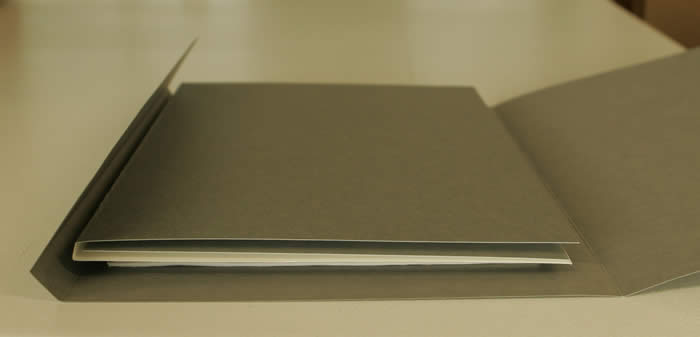Mixed Media Collections
The wide diversity of objects found in the HIV/AIDS collections can present many problems for the conservator, as although the varied items may need to be kept together to maintain the original order of the material, they may have different conservation needs.
Problems include:
- Storage Conditions
- 3D objects within paper collections causing planar distortion
- Acids released from ring binders integral to the paper collection
Storage Conditions
Different materials found in the HIV/AIDS collection have different optimal environmental conditions for their long term preservation. However, often they need to be stored together to maintain the original order of the collection. Also, in some cases, the optimal storage conditions are simply not available.
Solution:
While some items in the HIVS/AIDS collections such as VHS, audio cassettes and film reels can be moved to a different storage area with a lower temperature. This may not be possible for all items as moving the items risks losing the original order or context of the collection. The British Standard Institute suggests that mixed archival material can be stored at between 13°C to 20°C and 35% – 50% relative humidity (PD5454:2012). Although the conditions may not be ideal for all items, there is an emphasis on keeping temperature low and humidity moderate which will slow the rate of deterioration of all archival materials.
3D objects within paper collections
Having different sized objects within a paper collection may result in planar distortion of the paper sheet and potentially cause tearing. In the HIV/AIDS collections, small items such as condoms, balloons and badges are frequently found within paper documents and need to be removed while still retaining their originally meaning within the collection.
Solutions:
Shallow tray at top of box
If there are multiple items that need to be removed from a series, a shallow tray was created that can be placed at the top of the box which contains the series from which it was taken. The tray has two flaps that can be used to easily lift the objects out of the box and keeps them together if the researcher does not wish to look at them. Each object is wrapped in acid free tissue paper and clearly labelled to show where it originally came from. A sheet of paper with a notice stating that an item has been removed is also inserted into the items initial location, so that the original order can be recreated if needed.
Shallow tray at top of box to store multiple 3D objects |
Keeping items within series
If there are only a couple of items that are causing planar distortion, it is more suitable to keep these items in the original order, but enclose them in a rigid cardboard casing. A double crease folder was created to the depth of the object using a thick card. If necessary the items can be held in place using a polyester strap.
 |
Double crease folder made from thick card to house 3D objects within a series |
Acids released from ring binders integral to the paper collection
Plastics such as condom and pill cases not only form parts of the HIV/AIDS collection, but plastics such as ring binders and poly-pockets are also used to store the collection. As plastics degrade they release acids that can be absorbed into any adjacent materials and result in deterioration. Office ring binders can be especially problematic as they are often formed from PVC (Polyvinylchloride) which releases chloric acid as it degrades. Therefore, paper materials must be removed from this type of plastic storage to avoid acid migrating into the paper.
However, in some cases the plastic storage system is integral to the object. For example, some ring binders form part of a health promotion pack that may have been taken to schools or community groups. This type of object should be kept as it represents a part of the object’s history and without it the original intent of the pack may be lost.
Solutions:
Integral ring binders
If the ring binder was judged to be integral to the object, it was kept next to the paper materials it contained, so that the original function of the object could be easily recreated if necessary. Firstly the paper materials were removed from the ring binder and placed in a triptych folder. The ring binder was then placed in a custom made triptych folder.
In some cases, when the papers are removed, the ring binder lies at an extreme angle which may result in papers placed above it becoming bunched together at one edge and cause curling. Therefore, a void filler created from mount board was used to even out the level of the ring binder.
Also, if the ring binder is smaller than the rest of the papers in the box, it may cause planar deformation of the sheets as the papers placed on top of it will gradually bend around this shape. In this case, the triptych folder was reinforced using two pieces of thick card on the lower and upper cover. These two folders containing the ring binder and papers were then tied together using cotton tape and placed in an archival box.
An integral ring binder stored with paper materials |
Sample ring binders
Other ring binders that were judged not to be an integral part of the object were removed from the collections. However, samples of each type of housing were retained and kept at the end of the collection. If there were multiple types of the same housing, only one was kept as a reference. When housing was removed from the collection it was noted what type of housing it was and where it came from. This means that the original look of the material can be recreated if necessary.
Designed by the Learning Technology Section, © The University of Edinburgh

